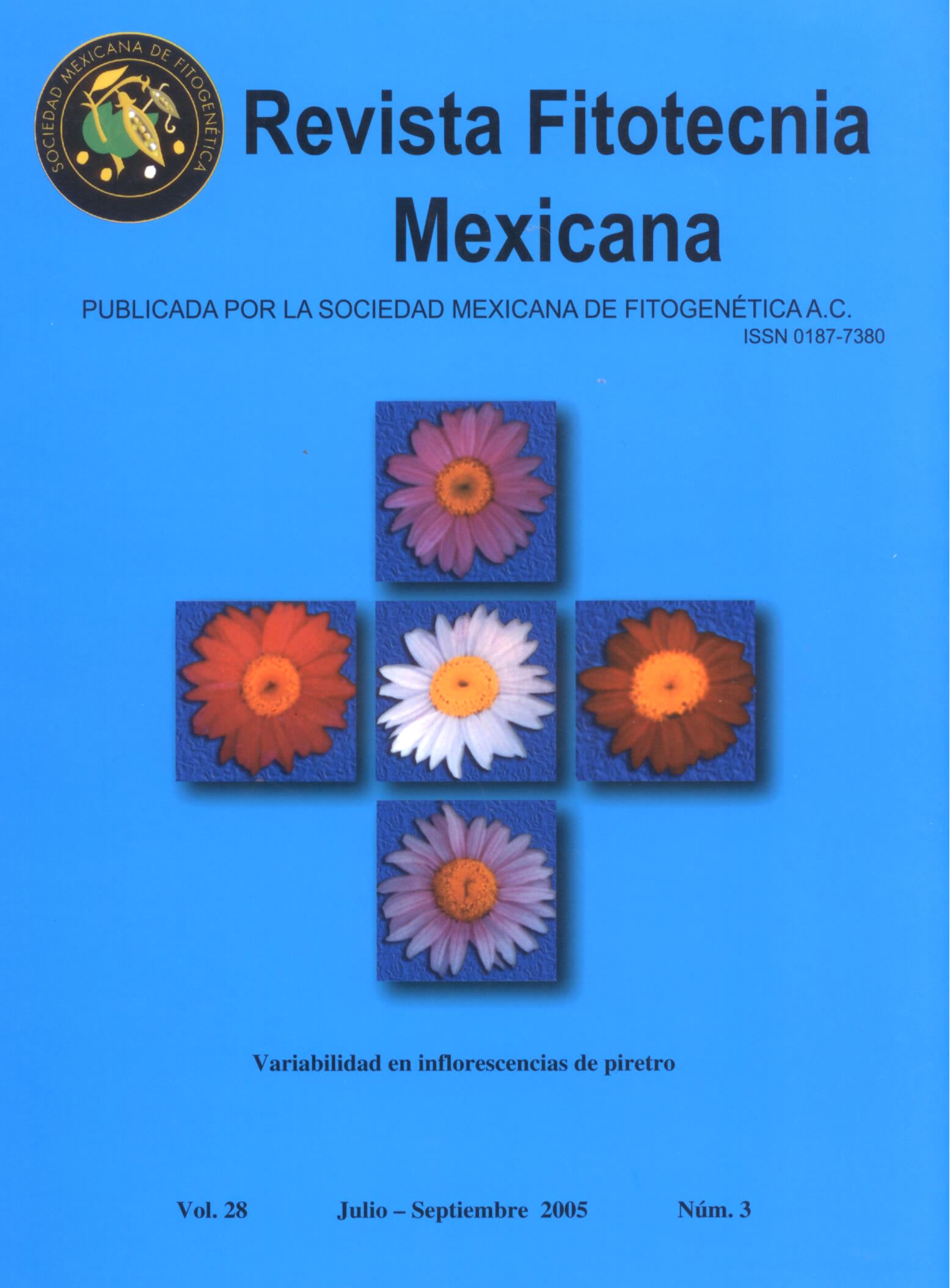PATTERNS OF PHASEOLINS AND RAPD ANALYSIS IN DOMESTICATED SPECIES OF PHASEOLUS
Main Article Content
Abstract
In this work we compared the efficiency of two classes of molecular markers, the phaseolin-proteins and the RAPD (random amplified polymorphic DNA) for monitoring the genetic diversity and to establish a phylogenetic relationship among Phaseolus species. The analysis of phaseolin patterns was efficient for detecting polymorphism among Phaseolus species; although it was not efficient for finding differences among cultivars or among individuals within one cultivar. The phaseolin patterns were similar between P. vulgaris and P. coccineus, and different with P. lunatus. The RAPD markers were adequate to detect polymorphism among cultivars of P. vulgaris and between individuals of P. coccineus. The polymorphism among individuals of P. coccineus was 24 %, and 27 % among eight cultivars of P. vulgaris. In P. coccineus the relationship among individuals derived from seeds of different testa colors were: black seeds were close to brown seeds, white seeds to spotted seeds, and both groups were separated from purple seeds. The cultivars of P. vulgaris formed two subgroups separated by an euclidian distance of 2.4. A subgroup was integrated for “Ojo de Cabra”, “Negro Americano”, “Pinto”, “Bayo”, “Garbancillo”, “Negro Bola” and “Peruano”; while “Flor de Mayo” grouped apart. These results agreed with the race classification of Mexican beans established by other authors. According to this classification and our results, “Negro Americano”, “Negro Bola” and “Peruano” are related to cultivars of the Durango race (“Ojo de Cabra”, “Pinto”, “Bayo” and “Garbancillo”), while “Flor de Mayo” belongs to the Jalisco race.

